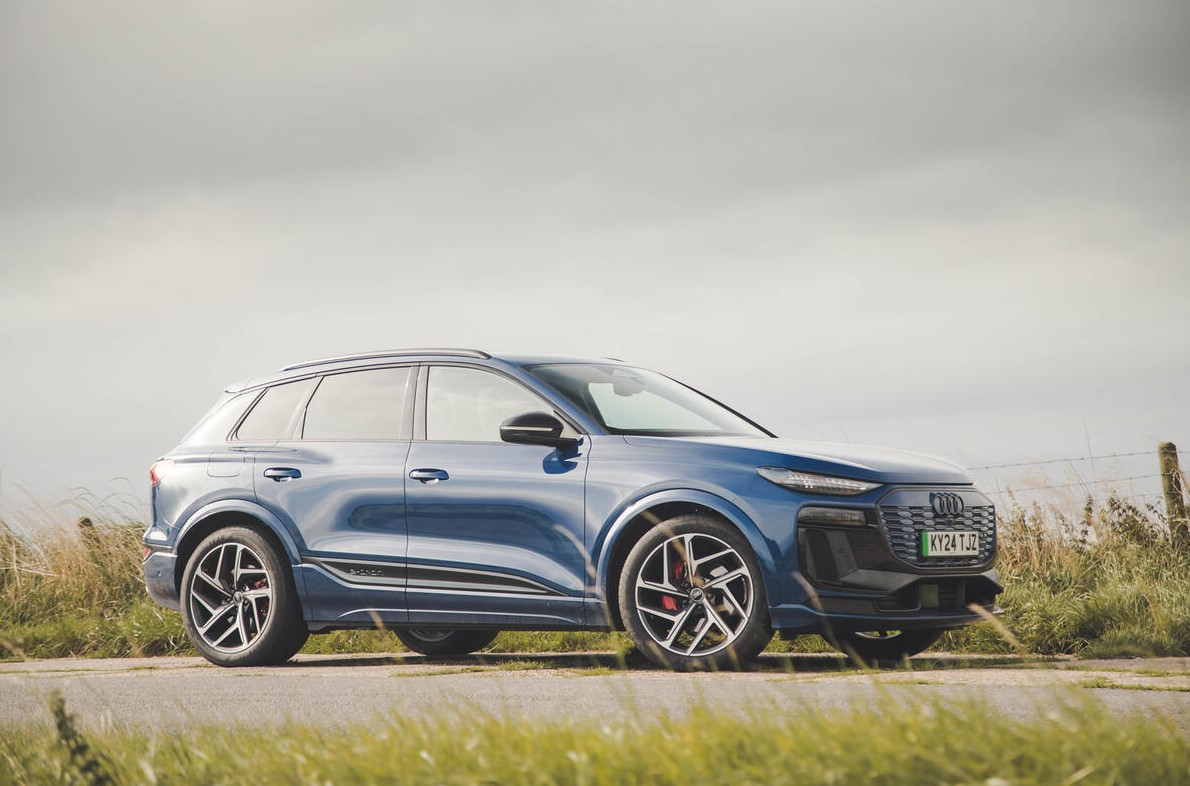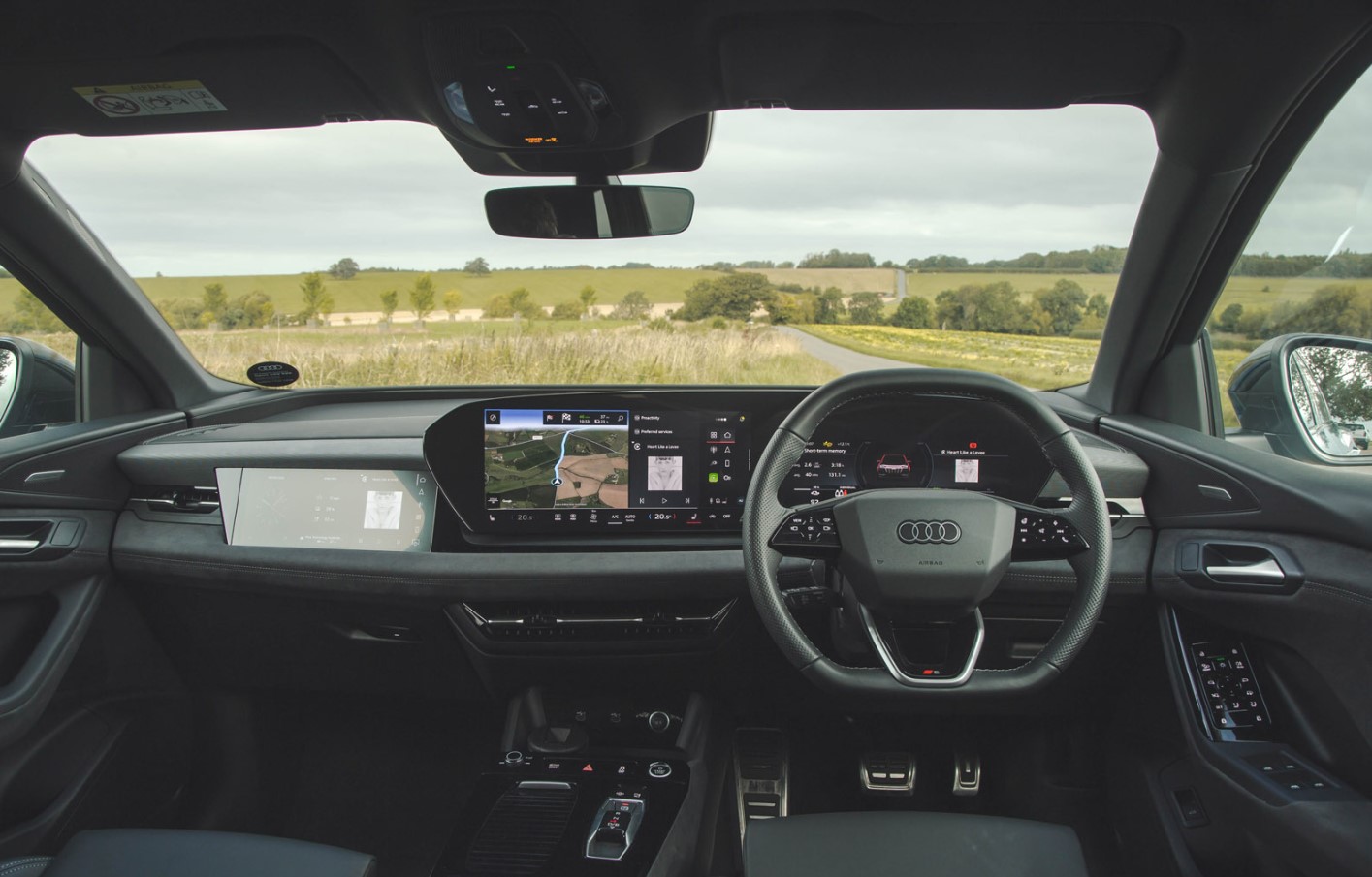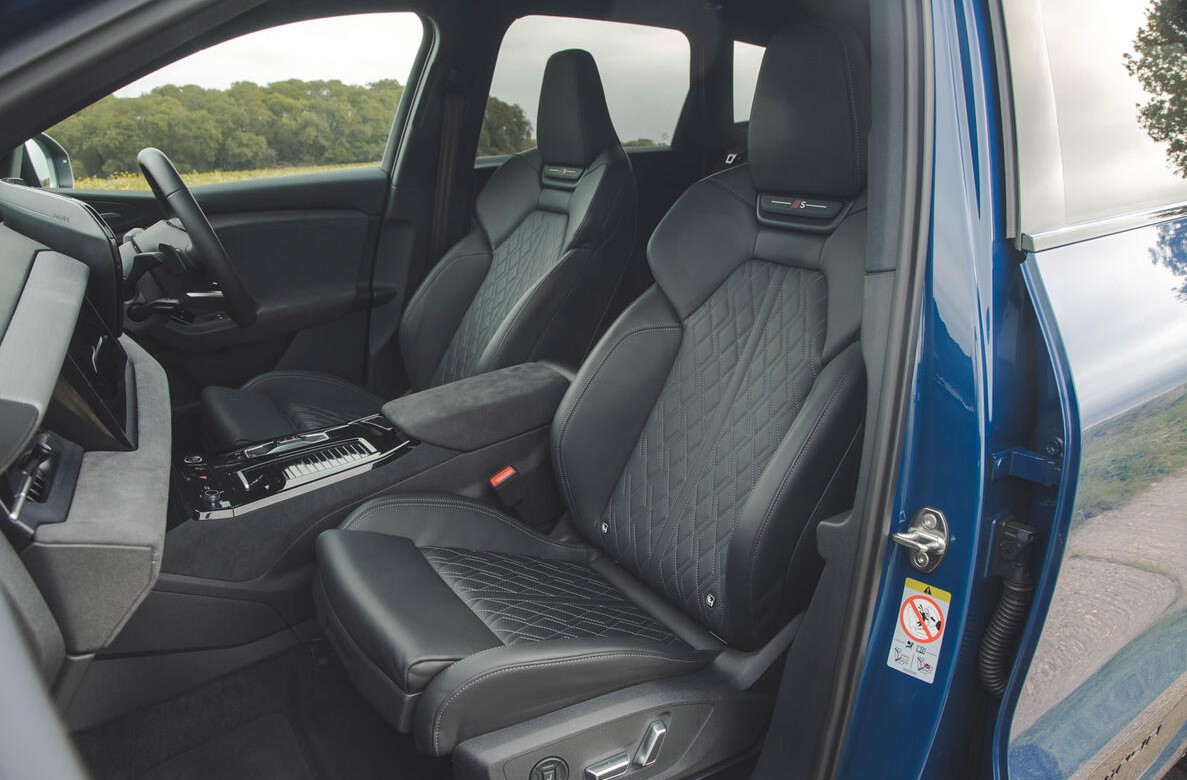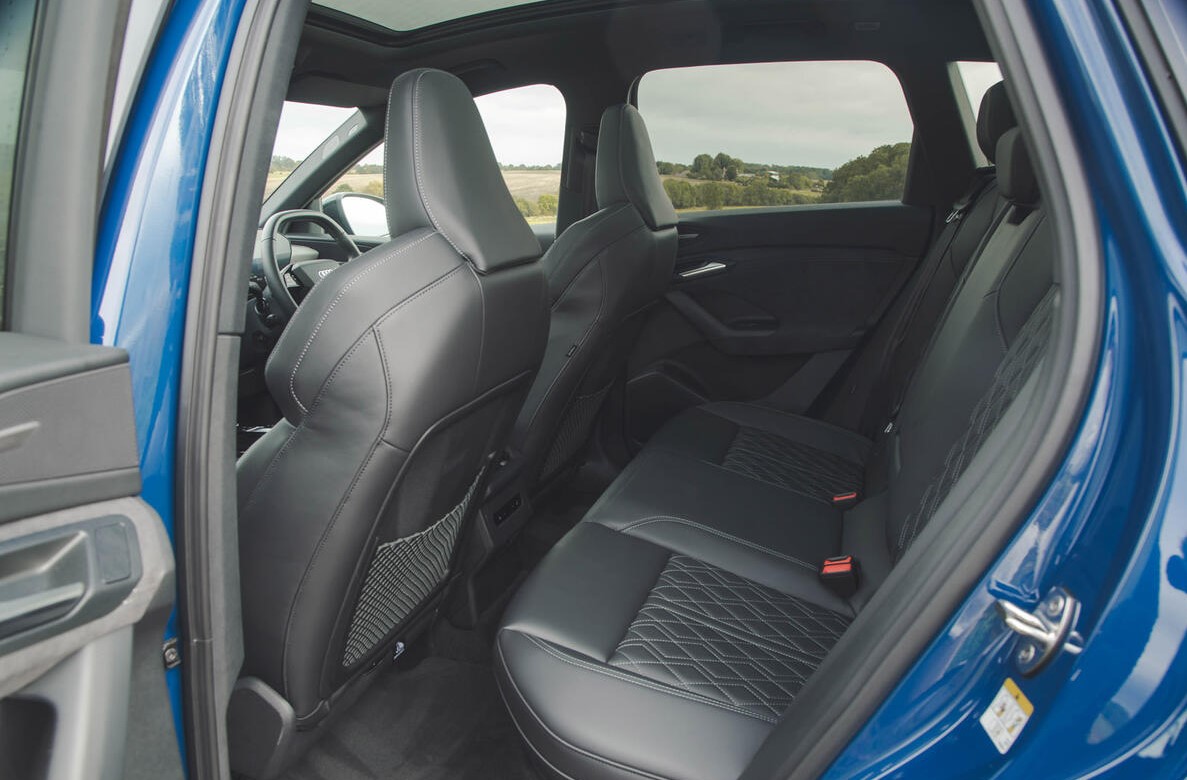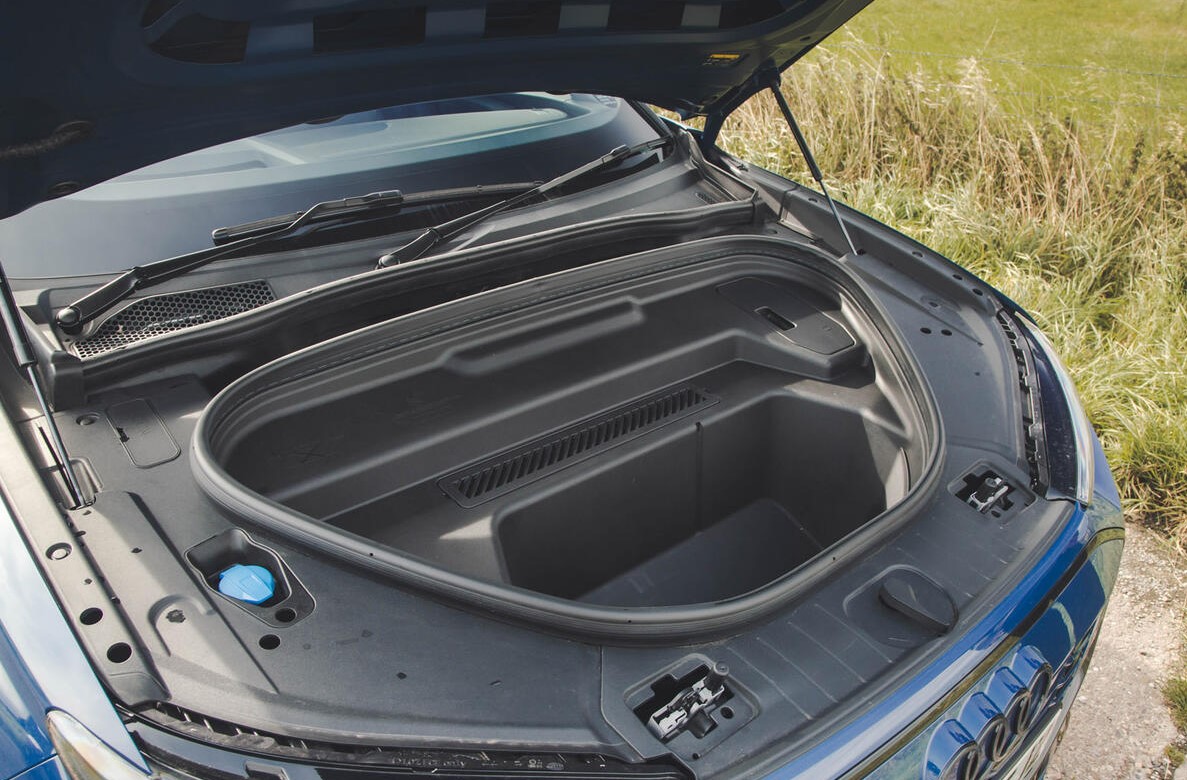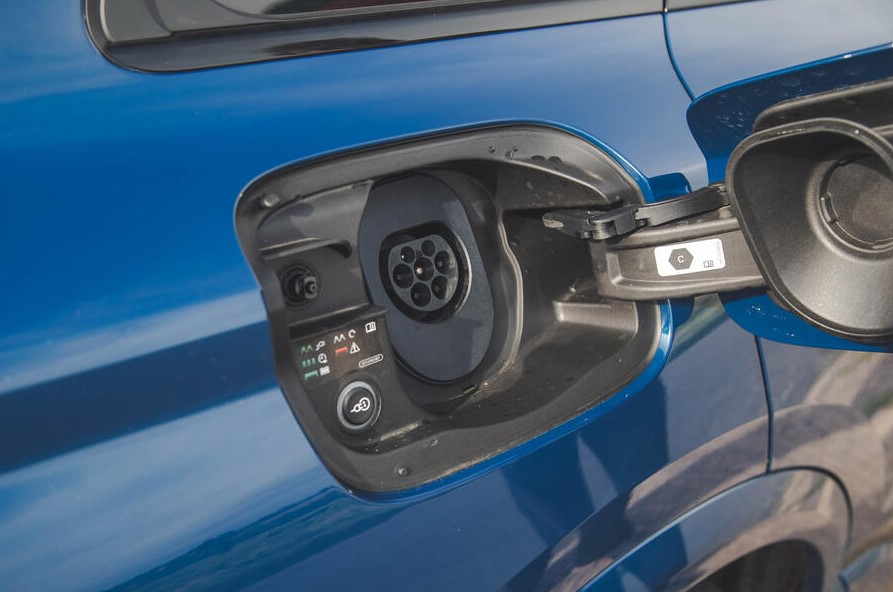2026 Audi Q6 E-Tron Specs, Review, Dimensions – Audi’s next electric SUV will have two motors, two charging ports, and a big battery that splits in half for more efficient fill-ups.
As we well know, midsize luxury SUVs are now quite popular, especially in America, and many buyers in the class are both interested in and ready to move to electric vehicles. The Tesla Model Y’s success as the world’s best-selling car for 2023 underlines this. The new Audi Q6 E-Tron and its sport-tuned SQ6 variant debut with a host of cutting-edge technologies, aiming to capture the heart of this very competitive market.
The Q6 is the first Audi model built on the new PPE electric vehicle platform, which Porsche’s upcoming Macan EV will also use, and it offers faster charging and more efficiency. Along with the latest technology from the automaker, the EV’s dashboard is equipped with three OLED panels that are controlled by AI and Android.
Even the taillights raise the bar with their cutting-edge innovations that improve safety and style. Audi has gone all out in anticipation of what may be the most important car in its battery-powered lineup and a turning point in the company’s path toward total electrification.
Between the bigger Audi Q8 E-Tron and the smaller Q4 E-Tron, the Q6 is a member of Audi’s E-Tron family, measuring 187.8 inches in length and 114.1 inches in wheelbase. Its size allows it to compete closely with the Model Y and serve as a high-end alternative to other midsize EV SUVs such the Ford Mustang Mach-E, Kia’s EV6, and VW ID 4. There is around 18.6 cubic feet of cargo area behind the motorized lift gate.
The charging wire or a tiny piece of carry-on baggage may fit in the additional 2.2 cubic feet of frunk storage up front. The spacious cabin features a flat, hump-free floor and can accommodate five people. Audi also claims that the midsize E-Tron SUV has a towing capacity of over 2 tons (US). 2026 Audi Q6 E-Tron Specs
2026 Audi Q6 E-Tron Redesign and Update Plan
Exterior & Interior
Regretfully, compared to earlier generations, this version of MMI features fewer haptic and tactile controls and more voice control and touch screen controls. The Q6 will see the release of Audi’s new AI-voice assistant, which has over 800 functions, many of which have up to 100 versions. It is powered by both cloud-based and offline natural language recognition. Furthermore, general questions and knowledge-based queries about the vehicle itself, such “how much pressure goes into the tire?” will be answered by the system.
Thanks to directional microphones, the driver is the only one who can change the route: “Hey Audi, navigate to Coldstone” cannot be changed by a younger passenger. When the car detects that the driver is alone in the cabin, it doesn’t even need the “Hey Audi” hotword; just say it out, and the car will react.
The Q6 E-Tron also has the option of a large augmented reality head-up display that projects speed, navigation, and driving assistance information into the driver’s field of view. Audi claims that the HUD may also be used to control one of two steering-wheel games when the E-Tron is parked.
Along the edge of the dashboard at the base of the windshield, users can also see the Audi Interaction Light, a strip of 84 full-color LEDs that move and light up to indicate various functions including the turn signal, driver aid alerts, or the AI Assistant voice command. Because the strip is visible from the outside of the vehicle, it can also serve as a charging indicator when connected in. Similar technology is seen in the Volkswagen ID 4, the Q6 E-Tron’s elder sibling.
This wouldn’t be an Audi debut without a groundbreaking lighting system that is too advanced for US auto regulations. The new Q6 E-Tron features new generation OLED and LED technology. While the front lights contain 61 white LED segments each for daylight operation, the rear lights share 360 triangular digital OLED segments that may display animated sequences that greet the driver upon arrival or lock the car.
This capacity also powers eleven user-selectable themes that change the form and look of the SUV’s light signature. One theme even has animations that play while driving to reduce distractions for other drivers. An algorithm is used in these animations to keep the overall light output constant. We will only see static themes because moving lights are not allowed on passenger cars in the United States.
Audi is thinking of ways to use its lighting technology to improve safety as well as aesthetics. When the hazard lights or the automated emergency braking system are engaged, for example, the OLED taillights change shape to form a triangle icon (similar to the design on the button for the majority of cars’ warning lights) to warn other drivers of danger.
Audi also demonstrated tail light combinations that would notify other cars or pedestrians when the Q6 was doing an automated parking maneuver or when a door was about to open into a bike lane. It always has a slight effect and doesn’t seem to affect visibility.
As soon as you step behind the wheel, Audi’s innovative triple-display Digital Stage MMI infotainment suite will greet you. Two flexible OLED displays—a large 14.5-inch main touchscreen and an 11.9-inch digital instrument cluster—are mounted on a single glass panel that curves around the steering wheel in this setup.
The hardware is configured with the latest version of Audi’s Multimedia Interface (MMI) software, which is presently based on Android Automotive OS. But without “Google Built-In,” users will get apps like Beach Buggy Racing, PlugShare, Spotify, and YouTube via Audi’s own tightly regulated marketplace rather than Google Play Services. (By the way, you can only use games and video apps when you’re parked and charging.)
It’s also possible to obtain “function on demand” features like improved surround sound or different light signature themes through Audi’s marketplace, which is kind of cool. However, this mostly raises the risk of microtransactions and paywalling, which I find uninteresting.
This triple screen arrangement is completed by the 10.9-inch passenger display located on the far right of the dashboard. This fully functional infotainment interface allows the front seat passenger to select music sources, send locations to the main navigation screen, and more. Passengers may even view video sources like YouTube while the vehicle is moving thanks to an Active Privacy Mode that prevents the driver from seeing or becoming distracted by the auxiliary screen.
2026 Audi Q6 E-Tron Specs
Engine & Performance
The Q6 E-Tron is driven by the Volkswagen Group’s new Premium Platform Electric architecture, just as the upcoming Porsche Macan EV. At debut, the SUV with dual-motor all-wheel drive will be offered in the Q6 and SQ6 models. The front motor is an asynchronous (ASM) unit that provides torque to the front axle when required, whilst the rear permanent magnet (PSM) motor is a little more potent and runs continuously.
Both motors may share many parts, which lowers complexity and costs, because of their comparable rotor and stator diameters and the lower use of expensive rare earth metals in their construction. Each motor features a self-contained dry sump lubrication and cooling system that injects oil directly onto the rotating elements of the e-motors to improve thermal performance, efficiency, and, ultimately, range. This design was inspired by racing combustion engines. One significant shared element is this.
By increasing to 340 kW (456 hp) for a launch control burst, the Q6 E-Tron Quattro, which has a combined output of 315 kW (about 422 horsepower) in the US, may reach its anticipated 5.0-second 0-60 mph sprint. The more potent SQ6 E-Tron, on the other hand, has a launch-controlled dash to 60 mph in 4.2 seconds with 380 kW (510 horsepower) and 360 kW combined (483 horsepower). The SQ6’s top speed of 143 mph is somewhat higher than the Q6’s 130 mph speed limit.
I was able to experience the power of the SQ6 for myself when I took a brief first drive of a European-spec prototype over a parking lot handling course at the Audi Brand Experience Center at Munich Airport. It is extremely responsive and quick in its Dynamic driving mode, which keeps both engines running and weights up the steering for a more precise feel.
Efficiency mode, on the other hand, deactivates the front motor for greater range while maintaining what seems to be ample power for commuting about town. Since I would need more time behind the wheel to acquire more detailed driving impressions, we will return to the Q6 E-Tron once the North American specification is out.
Both the Q6 and SQ6 designs feature a new 100 kWh nickel manganese cobalt battery pack (or 94.9 kWh when reserve is taken into account) with a unique chemistry that promises to have a 50% higher energy density than the previous generation while using less cobalt to manufacture.
Audi claims that this enables the Q6 to go “over 300 miles” between charges since its battery is 15% lighter than that of its previous EV generation with the same capacity. (EPA has not yet released its real numbers.) Audi has not yet revealed the precise price of the SQ6’s larger wheels, wider tires, and performance upgrades at the time of publication. 2026 Audi Q6 E-Tron Specs
2026 Audi Q6 E-Tron Fuel Economy
Furthermore, Audi claims that the new Q6’s 800-volt architecture charges 30% faster than its predecessors. An 800-volt DC fast charging station can provide up to 270 kW of electricity to the EV, enabling it to charge from 10% to 80% in as little as 21 minutes. However, the vast majority of DCFC stations now in operation operate at 400 volts.
Because of this, Audi’s 800-volt battery may split into two “virtual batteries” that can be charged in parallel at 400 volts each. In this mode, the maximum charging speed drops to 135 kW, but less energy is lost to voltage conversion, potentially leading to shorter charge times and cheaper prices.
The Q6’s back fenders now house the two charging ports that Audi’s E-Tron vehicles have always had, providing drivers a bit more flexibility while parking and charging at home and destination chargers. The CCS combo connection on the driver’s side supports DC quick charging in addition to AC Level 1 and Level 2 charging.
A maximum of 9.6 kW/40A of single-phase, 240-volt energy from North America may be handled via the AC-only passenger side connector. Despite Audi’s promise to embrace the NACS standard, the Q6 E-Tron will not include the “Tesla port” at launch.
Like other EVs, the Q6 can recharge itself using recovered braking energy. There are now five user-selectable regeneration modes, including a brand-new one-pedal driving mode that uses the accelerator to initiate full regen and stops the SUV without the need of the brake pedal. All modes provide up to 220 kW of recuperation, which automatically balances the regeneration with the friction brakes as needed and recovers up to 95% of the braking energy with each stop. 2026 Audi Q6 E-Tron Specs
2026 Audi Q6 E-Tron Release Date & Price
After testing the technology and taking the Q6 and SQ6 E-Tron SUVs for very short first drives, I’m excited about this new addition to the EV landscape and can’t wait to get behind the wheel more, experience the performance in real-world scenarios, and see how Audi’s unique approach to dashboard technology holds up on the road.
Orders for the first Audi Q6 E-Trons will begin arriving in Europe this summer, with prices starting this month (March 2024) at 74,700 euros (about $81,203). North American prices will probably be significantly lower to fall between the smaller Q4 ($56,395) and larger Q8 ($75,595) E-Tron models, even though the exact MSRP has not yet been revealed. When reservations open in the upcoming weeks, you may learn more at AudiUSA.com.
After the introduction, Audi plans to expand its inventory with two rear-wheel drive configurations and Sportback models (one long-range model and an entry-level car that, in my opinion, will use a smaller 83 kWh battery pack). The manufacturer has announced the debut of the even hotter-trotting RS Q6 E-Tron model, although it has not yet provided a specific date or made an official statement.
Note: The details included in this blog post are derived from pre-release material that was accessible when the article was written. If you want the latest information, you should check official sources or call your nearest dealership.
Read Also:
- 2026 Audi SQ8 Redesign, Dimensions, MSRP
- 2026 Audi Q9 Specs, Features, Price
- 2026 Audi A6 Review, Specs, Release Date
- 2026 Audi Q3 Redesign, Specs, Review
- 2026 Audi Q9 Price, Specs, Interior
